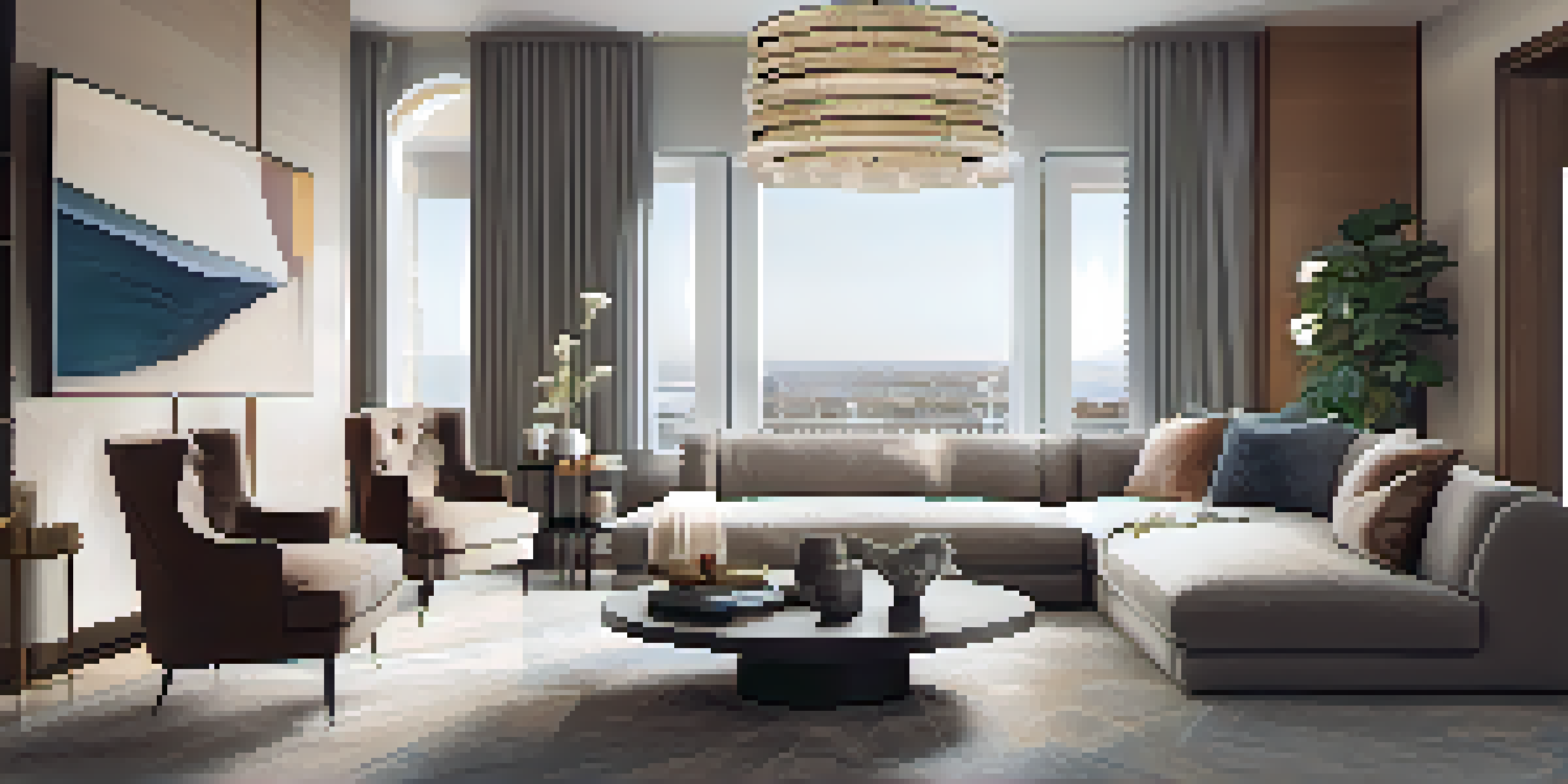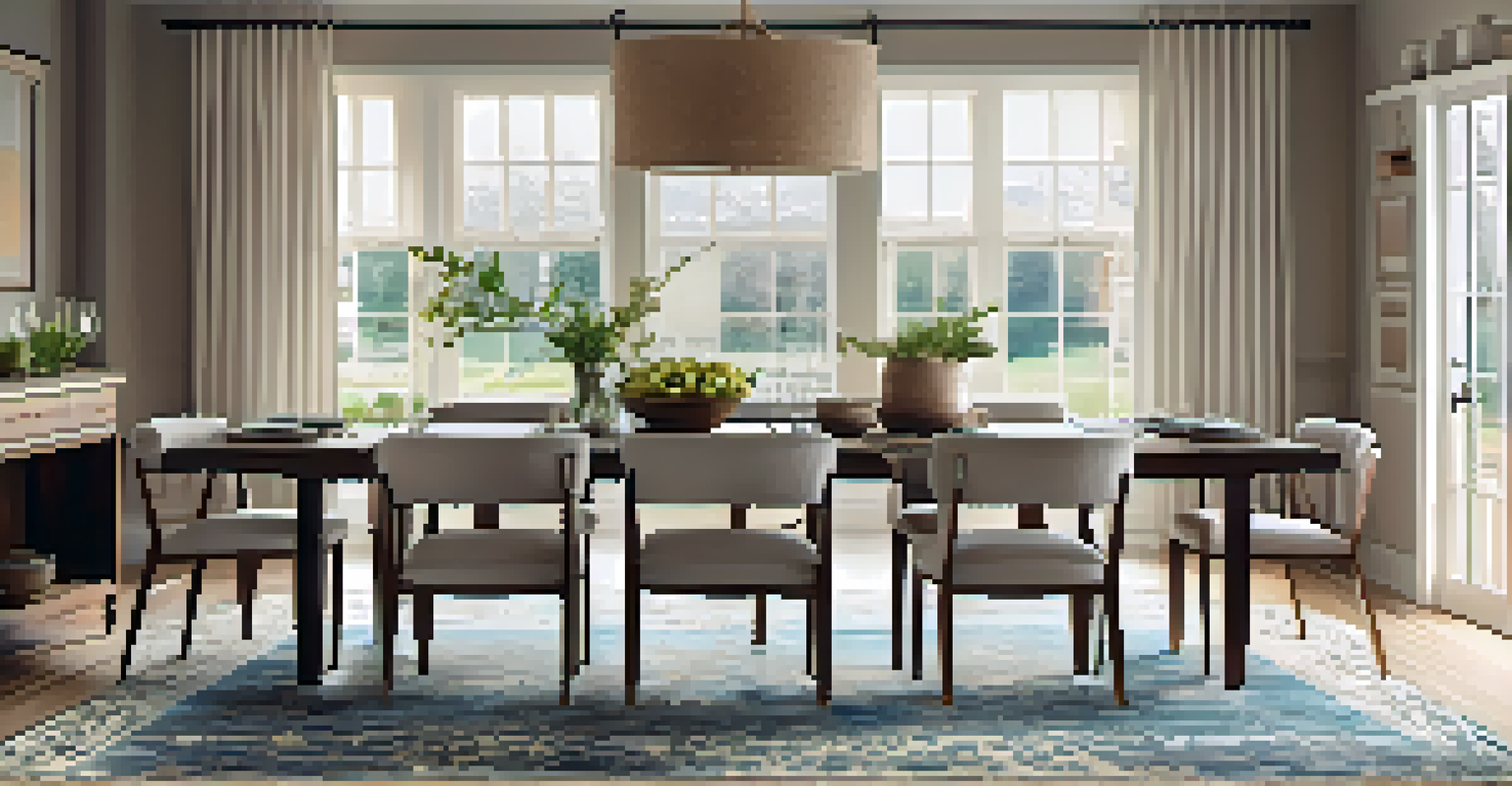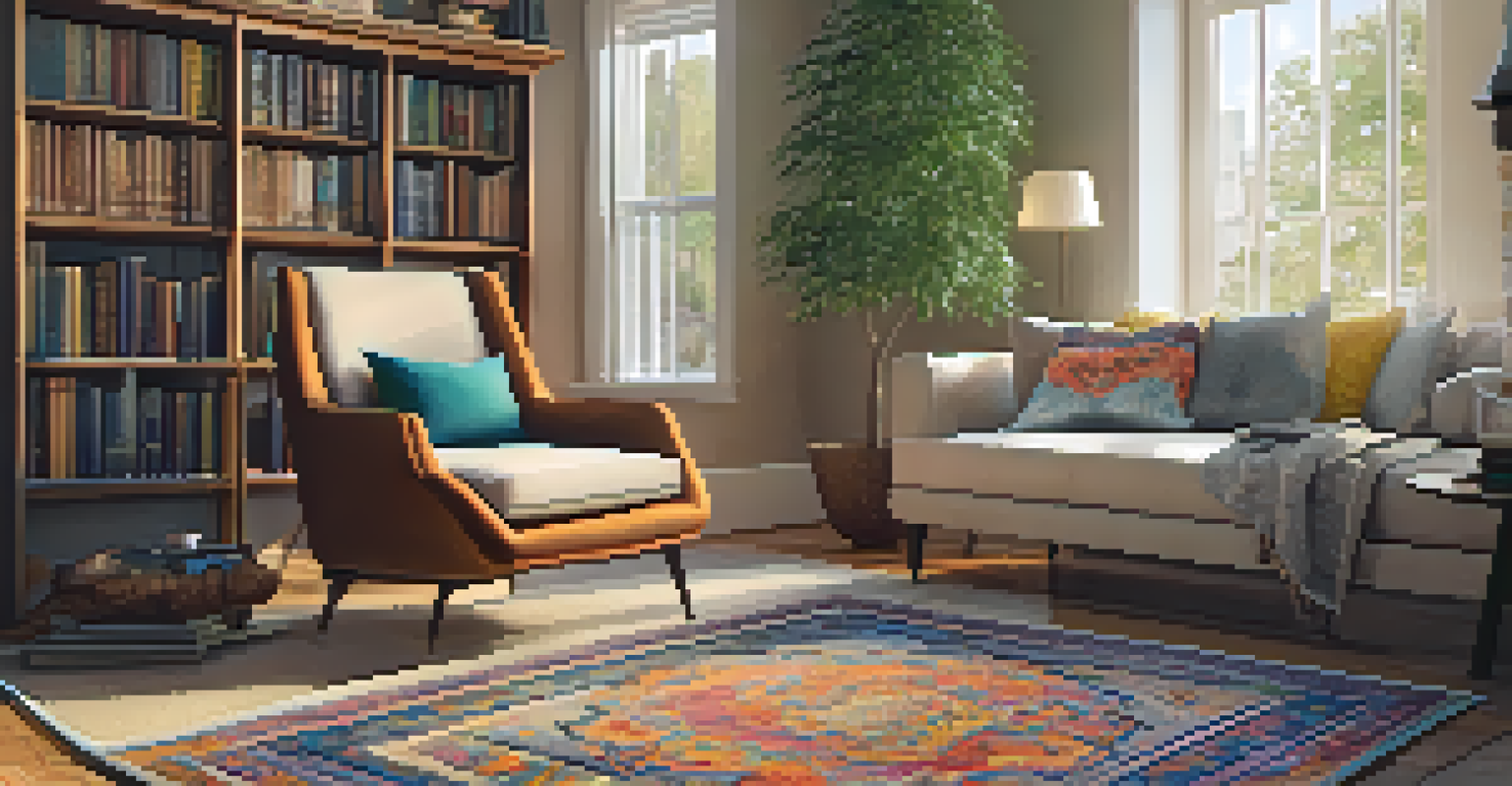Using Rugs to Define Spaces in Open Floor Plans

Understanding Open Floor Plans and Their Challenges
Open floor plans are popular for their spacious feel, but they can pose a challenge when it comes to defining different areas. Without walls to separate spaces, it may be hard to determine where one area ends and another begins. This can lead to a cluttered or disorganized look, making it difficult to create functional zones within your home.
A room should never allow the eye to settle in one place. It should smile at you and create fantasy.
One effective solution to this dilemma is the strategic use of rugs. Rugs can visually demarcate areas, providing a sense of separation even in a wide-open space. Think of them as the invisible boundaries that help guide the eye and create a sense of order amidst the openness.
By understanding the challenges of open floor plans, you can appreciate the role rugs play in enhancing the overall design. They not only add warmth and texture but also help in organizing your living environment, making it more inviting and functional.
Choosing the Right Rug Size for Your Space
Selecting the right size rug is crucial in defining spaces within an open floor plan. A rug that’s too small can make a room feel disjointed, while one that’s too large may overpower the area. To create a harmonious look, aim for a rug that allows at least the front legs of your furniture to sit on it, which helps anchor the space.

For example, in a living room area, a large rug that encompasses the seating arrangement creates a unified feel, while a smaller rug can work well in a reading nook or under a coffee table. This method helps to visually separate the areas, making each one feel more intentional and designed.
Rugs Define Spaces in Open Layouts
Rugs can visually separate areas in open floor plans, creating functional zones and enhancing overall design.
Remember, the right size rug can make all the difference in how the space feels. It helps in guiding the flow of the room, enhancing both functionality and aesthetics.
Using Color and Pattern to Create Atmosphere
Color and pattern play a significant role in how rugs can define spaces. A bold, colorful rug can serve as a focal point, drawing attention to a particular area like a dining or living room. In contrast, softer colors can create a calming atmosphere, perfect for spaces dedicated to relaxation, such as bedrooms or reading corners.
Design is not just what it looks like and feels like. Design is how it works.
For instance, a vibrant geometric pattern can energize a space, making it feel lively and inviting, while a neutral, textured rug can bring a sense of tranquility. By choosing the right colors and patterns, you can not only define areas but also enhance the overall mood of your home.
Ultimately, the rug you choose can reflect your personal style while helping to create distinct atmospheres within your open floor plan.
Layering Rugs for Added Depth and Interest
Layering rugs is a trendy technique that can add depth and interest to your open floor plan. By placing a smaller rug on top of a larger one, you can create a cozy, inviting feel while still defining different spaces. This approach allows for more creativity and personalization in your design.
For example, a natural jute rug can serve as a base while a colorful Persian rug is layered on top. This not only distinguishes the area but also adds texture and visual appeal. Layering can also help in transitioning between different zones, like from a living area to a dining space, maintaining a cohesive look.
Selecting the Right Rug Size Matters
Choosing the appropriate rug size helps anchor furniture and fosters a cohesive look within a space.
When done thoughtfully, layering rugs can enhance the aesthetic of your home. It’s a fantastic way to express your unique style while embracing the benefits of open floor living.
Defining Areas with Area Rugs: Living Room Examples
In the living room, area rugs can be instrumental in defining the seating arrangement. By placing a large rug beneath your sofa and chairs, you create a clear boundary that separates the living space from the dining or kitchen areas. This not only enhances the visual flow but also promotes conversation and comfort.
For instance, a plush area rug can soften the hard surfaces of an open floor plan, creating a warm and inviting atmosphere. Choosing a rug that complements the furniture and decor helps in harmonizing the overall design.
Ultimately, using area rugs in the living room effectively defines the space, making it feel more intimate and functional while adding a stylish touch.
Enhancing Dining Spaces with Rugs
Rugs can play an essential role in enhancing dining areas within open floor plans. A well-chosen rug can not only define the dining space but also add warmth and texture, making meals more enjoyable. Consider placing a rug that extends beyond the dining table, allowing for chairs to be pulled out comfortably without catching on the edges.
For example, a patterned rug under the dining table can create a focal point that draws the eye, contrasting beautifully with a neutral floor. This helps in distinguishing the dining area from the rest of the open space, making it feel special and inviting.
Layering Rugs Adds Depth and Style
Layering rugs not only adds texture and interest but also helps transition between different areas in your home.
Using rugs in your dining area can elevate the dining experience while clearly marking the space, allowing for an organized and stylish layout.
Practical Considerations for Choosing Rugs
When selecting rugs for your open floor plan, practicality is just as important as aesthetics. Consider the material and durability of the rug, especially in high-traffic areas. For instance, natural fibers like jute or wool are not only stylish but also quite durable, making them ideal for living rooms or dining areas.
Additionally, think about maintenance and cleaning. Rugs that are easy to clean or have stain-resistant properties can save you time and hassle, especially in homes with pets or children. Choosing the right rug can ensure that your space remains both beautiful and functional.

Ultimately, balancing style with practicality will lead to a successful design that not only looks great but also stands the test of time.